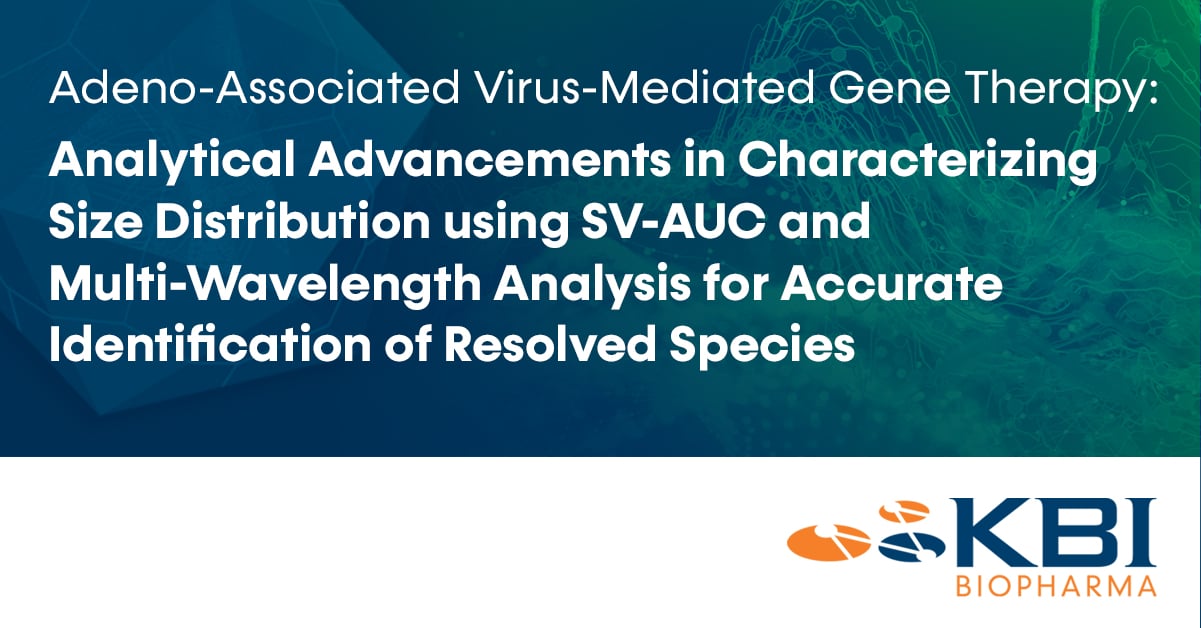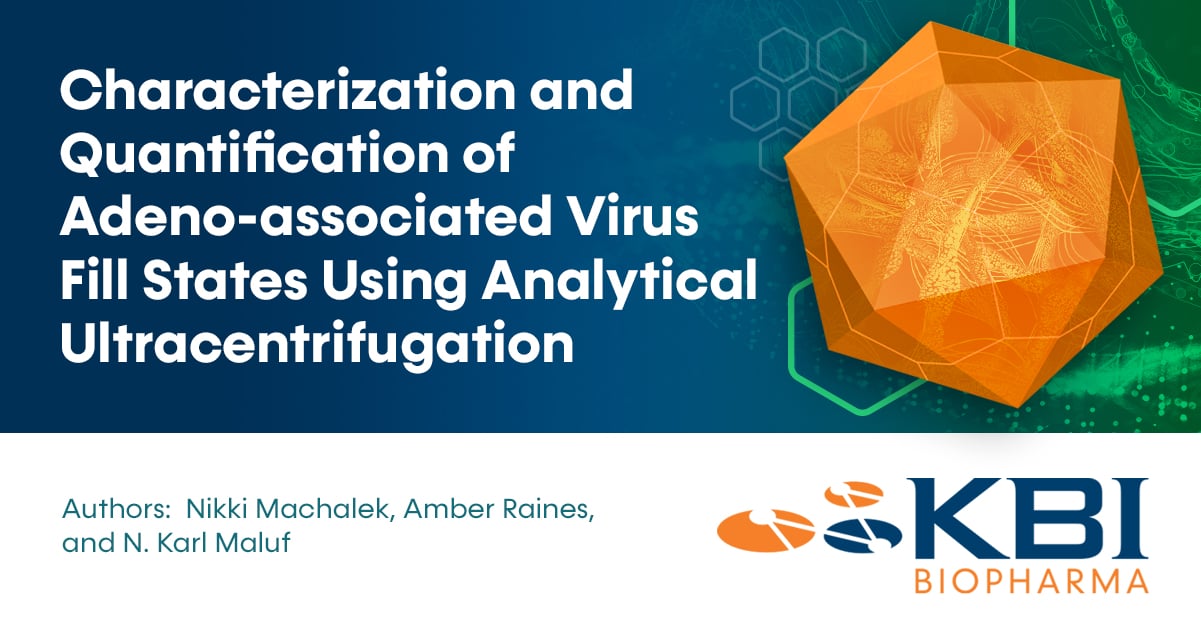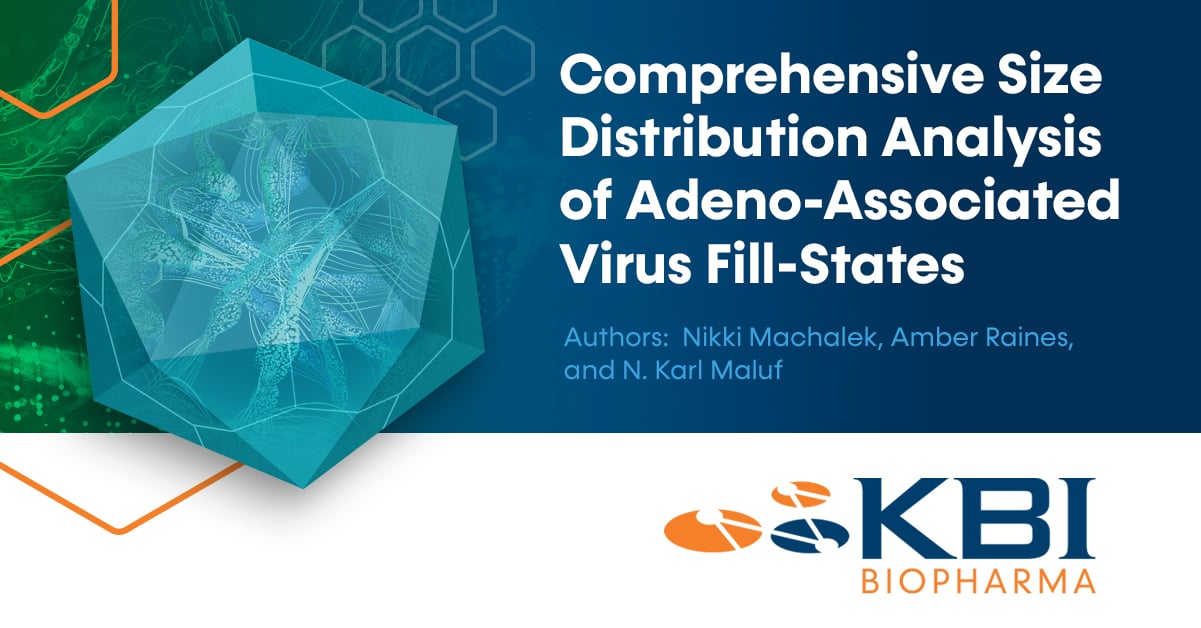Biophysical Characterization
Understanding the Higher-Order Structure stability of proteins for sustained potency and activity
Biophysical Characterization Services
Supporting Characterization, Comparability, and Preformulation Development
KBI Biopharma’s experts team acquire biophysical information on the simplest to the most complex drug molecules in your pipeline, while avoiding potential pitfalls, in order to make concise, well informed productive decisions about their development and manufacturing. Through our biophysical characterization services, our goal is to provide you with the analytical methods and formulation you need to maximize your protein higher-order structure stability to deliver prolonged activity and potency for safe biotherapeutics use.
The KBI Biopharma Rapid Analytics Biophysical Characterization Core functions as a contract research laboratory that specializes in biophysical analysis of protein conformation, stability, and aggregation.
KBI routinely performs biophysical characterization to support characterization and comparability assessments in addition to preformulation development.
Our biophysical characterization techniques have applications to small peptides, nucleic acids (like anti-sense therapeutics, aptamers, and ribozymes), small molecule drugs, carbohydrates, vaccines, viruses, drug-polymer conjugates, and more. Our expert team of scientists have experience with a wide variety of pharmaceutically-relevant macromolecular complexes, ranging from small peptides to large viral-derived complexes.
Our Expertise Includes:
-
SV-AUC (Sedimentation Velocity Analytical Ultracentrifugation)
-
SE-AUC (Sedimentation Equilibrium Analytical Ultracentrifugation)
- DSC (Differential Scanning Calorimetry)
- DLS (Dynamic Light Scattering)
- CD (Circular Dichroism)
- FTIR (Fourier Transform Infrared Spectroscopy)
- ICD (Isothermal Chemical Denaturation)
- DSF (Differential Scanning Fluorimetry)
- MALS (Multi-Angle Light Scattering)
- Fluorescence Spectroscopy
-
High Resolution Mass Spectrometry
Explore More Analytical:
Let's Chat.
Fill out the form below to get in touch with our team of experts.
Characterization and Comparability
Methods and Services
The KBI Biopharma Rapid Analytics Biophysical Core specializes in biophysical and biochemical characterization of proteins, nucleic acids, and other macromolecule assemblies like viral vectors for gene therapy, protein-polymer conjugates, lipid nanoparticles, and more. We use various techniques to characterize or compare protein higher order structure (HOS).
This includes methods to characterize:
- Protein folding (secondary/tertiary structure)
- Protein stability
- Protein conformation
- Protein aggregation
- Oligomeric state - also called protein sub-units assembly - of the native protein (quaternary structure)
For characterizing oligomeric state and aggregation, we offer analytical ultracentrifugation (AUC), size-exclusion chromatography (SEC) with multi-angle light scattering (MALS) and dynamic light scattering (DLS) services. For characterization of protein conformation and stability, we primarily use circular dichroism (CD), Fourier transform infrared (FTIR), differential scanning calorimetry (DSC), and fluorescence.
We can also quantify protein-protein or protein-ligand interactions for various applications, including functional assessment of antibody-antigen or hormone-receptor pairs using AUC and, when appropriate, DSC and fluorescence.
Methods Summary
-
Analytical Ultracentrifugation (AUC)
Analytical ultracentrifugation (AUC) is a fundamental and powerful tool for studying the size and shape of macromolecules in solution. It is particularly important for characterizing protein aggregation and determining the native state stoichiometry (quaternary structure).
AUC - sedimentation velocity
- Excellent method for studying and quantifying protein aggregation
- Often used for cross-validation of SEC methods
- Typically allows measurements directly under formulation conditions
- Demonstrates conformation equivalence of material from different manufacturing processes (comparability protocols)
AUC - sedimentation equilibrium
- The "gold standard" for measuring molecular mass in solution and studying protein self-association and protein-protein interactions
- Used to study interactions with small molecules when binding is linked to protein association
AUC - density gradient sedimentation equilibrium
- Establishment of a density gradient, typically using CsCl, that can separate macromolecules based on differences in densities
- This is especially useful to study the fill states of viral systems, since proteins and nucleic acids have very different densities that result in large density differences between various viral fill states
-
Spectroscopy (CD, FTIR, and Fluorescence)
KBI Biopharma's Rapid Analytics Biophysical Core has completed hundreds of projects on proteins, peptides, nucleic acids, and other molecules to characterize secondary and tertiary structure for a wide range of client needs, including extensive comparability protocols.
Circular Dichroism (CD) Spectroscopy
- Excellent tool for characterizing thermal stability of proteins and the effects of solution conditions and excipients on stability and reversibility of unfolding
- Used for demonstrating conformational equivalence of material from different manufacturing processes (comparability protocols)
- Provides basic characterization of overall secondary structure (percentage of alpha helix and beta sheet)
- Used for determining whether novel proteins are properly folded
- Detects changes in tertiary structure around aromatic residues
Fourier Transform Infrared (FTIR) Spectroscopy
- Unique ability to provide secondary structure information for lyophilized or spray-dried powders or precipitates, as well as the liquid state
- More sensitive than CD for details of beta-sheet structures
- Detects aggregation arising through formation of intermolecular beta sheets
- Excellent for secondary structure determination for products in formulation buffers that contain UV-absorbing materials
- Can be leveraged to determine accurate concentration for products in UV-absorbing formulation buffers
Fluorescence Spectroscopy
- Intrinsic fluorescence can be used to study changes in protein conformation, for comparability protocols (comparability of tertiary structures), and to monitor protein stability as a function of pH or added denaturants, and sometimes to monitor ligand binding to measure equilibrium dissociation constraints
- Hydrophobic fluorescent probes such as ANS detect changes in surface hydrophobicity and are useful for pre-formulation studies to assess changes in conformational stability as a function of pH or added salts, as well as for comparability protocols
-
Aggregation Analysis (SEC-MALS, DLS)
The amount, type, and size of aggregates in biopharmaceuticals can have an important impact on the safety and efficacy of biopharmaceuticals. The KBI Biopharma Rapid Analytics Biophysical Core has extensive experience in aggregation issues and analysis of aggregation in proteins and other macromolecules. In addition to AUC (including both sedimentation velocity and sedimentation equilibrium), we use SEC-MALS and DLS.
We have extensive experience using these technologies to cross-validate SEC or other assays that are used for routine aggregation analysis or lot release, and in using these technologies to demonstrate comparability of aggregation for biosimilars, between different manufacturing processes or sites, etc.
Size-Exclusion Chromatography with Multi-Angle Light Scattering (SEC-MALS)
The MALS "classical" light scattering technique, when used in conjunction with size-exclusion chromatography, measures the true mass of each peak independent of the molecular shape or elution position, making SEC an absolute method that:
- Confirms quaternary structure for proteins that elute abnormally on SEC
- Provides enhanced sensitivity for detecting small amounts of aggregates and distinguishes dimers from unfolded monomers
- Can distinguish PEG and product MW for PEGylated products
- Can measure total nucleic acid and total capsid protein concentrations and average molecular weights for viral systems such as AAV
Dynamic Light Scattering (DLS)
"Dynamic" light scattering determines hydrodynamic size by measuring the Brownian motion of proteins.
- An excellent and direct method to characterize the hydrodynamic size of PEGylated proteins, nucleic acids, etc.
- An excellent method for detecting trace amounts of aggregates (especially large ones) and differences in aggregation for different formulations or manufacturing lots, but is fairly weak in quantifying the actual amount of aggregate and measuring absolute masses
- Generally allows measurements to be made directly in formulation buffers
- Good for monitoring stability over time; accelerated stability studies can be carried out with real-time monitoring in situ or by periodic sampling
- Samples can be studied at concentrations up to ~50 mg/mL
-
Differential Scanning Calorimetry (DSC)
In support of our characterization of protein conformation and stability services, we also use differential scanning calorimetry (DSC).
- Allows for direct measurement of thermal stability in solutions
- DSC thermograms are often included in the characterization package of a CMC section (characterization of higher order structure)
- Often used in comparability protocols (comparability of tertiary structure and stability)
- Results can sometimes predict relative long-term storage stability
- Can detect whether the domains within the multi-domain proteins such as antibodies unfold independently
- By monitoring potential shifts in Tm with loading concentration, DSC can provide information on the assembly properties of both the native and denatured states of a protein
- Can be used to indirectly monitor ligand binding to a protein
Introducing the KBI Biopharma Standalone Services Portal
Streamlining Analytics Ordering and Sample Coordination
Self-Service Analytical Support at Every Phase of the Project Cycle
Our goal is to help you get innovative biologics to patients, faster.
The KBI Biopharma Standalone Services Portal offers a one-stop-shop for quote requests, ordering, sample submission and shipment tracking, and a single visualization of studies. This fast and easy self-service process streamlines analytics ordering and sample coordination.
- Customer-centric quote management
- Sample submission and real-time tracking
- Unified visualization of studies, reports, and results
Explore Recent Resources
Article
Adeno-Associated Virus-Mediated Gene Therapy: Analytical Advancements in Characterizing Size Distribution using SV-AUC and Multi-Wavelength Analysis for Accurate Identification of Resolved Species
At KBI Biopharma, we are leading the way in fully characterizing the size distribution of AAV products using SV-AUC combined with multi-wavelength analysis, giving us the ability to accurately identify each resolved species.
Poster
Characterization and Quantification of Adeno-associated Virus Fill States Using Analytical Ultracentrifugation
In this poster, we show how this analysis can be used to identify empty, partially-packaged and full capsids, calculate the ratio of protein to DNA present in well resolved species, and compare the multi-wavelength results with expected values that arise from a consideration of the shape properties of AAVs. Furthermore, we show how this approach can help eliminate false peak identification.
Poster
Comprehensive Size Distribution Analysis of Adeno-Associated Virus Fill States
In this poster, we compare the results from SV-AUC with MWA with two orthogonal separation methods: sedimentation equilibrium (SE) CsCl density gradient analysis and size exclusion chromatography coupled with multiple angle light scattering (SEC-MALS).
Contact Us
Fill out the form below to connect with our team of experts.
Explore More Analytical Services & Capabilities:

Never Miss Another Update!
Subscribe to KBI's Newsletter, The Pulse, to stay up-to-date on all the latest news, articles, and events from KBI Biopharma.




